Castles & Fortresses of Romania
BRAN CASTLE

Beyond the legends of Dracula, Bran Castle is a stupendous landmark, rising between the ridges of the Carpathians, along an old road between Wallachia and Transylvania. Standing before the mighty walls and towers that seem to grow from the rocky outcrop, we might expect dragons flying about and knights watching the valley from the ramparts!
Probably one of the most iconic and popular destinations of Romania, the castle of Bran has become a symbol for travelers coming from around the world to meet the mythical count Dracula. Bran Castle is located about 30 km to the southwest of Brașov, at the northern end of the Rucăr-Bran Pass and between the mountains of Bucegi and Piatra Craiului. The castle used to guard the border between Transylvania and Wallachia, being built upon a steep rock in the narrow part of the valley. It later became the royal residence of Queen Mary of Romania, while today it continues to fascinate visitors over six centuries after it was built. While many of its original treasures have been moved to the nearby Bran National Museum after it was ceded back to the heirs of the royal family, the castle still manages to capture the imagination and create a feeling of traveling back in time.
PELEȘ CASTLE
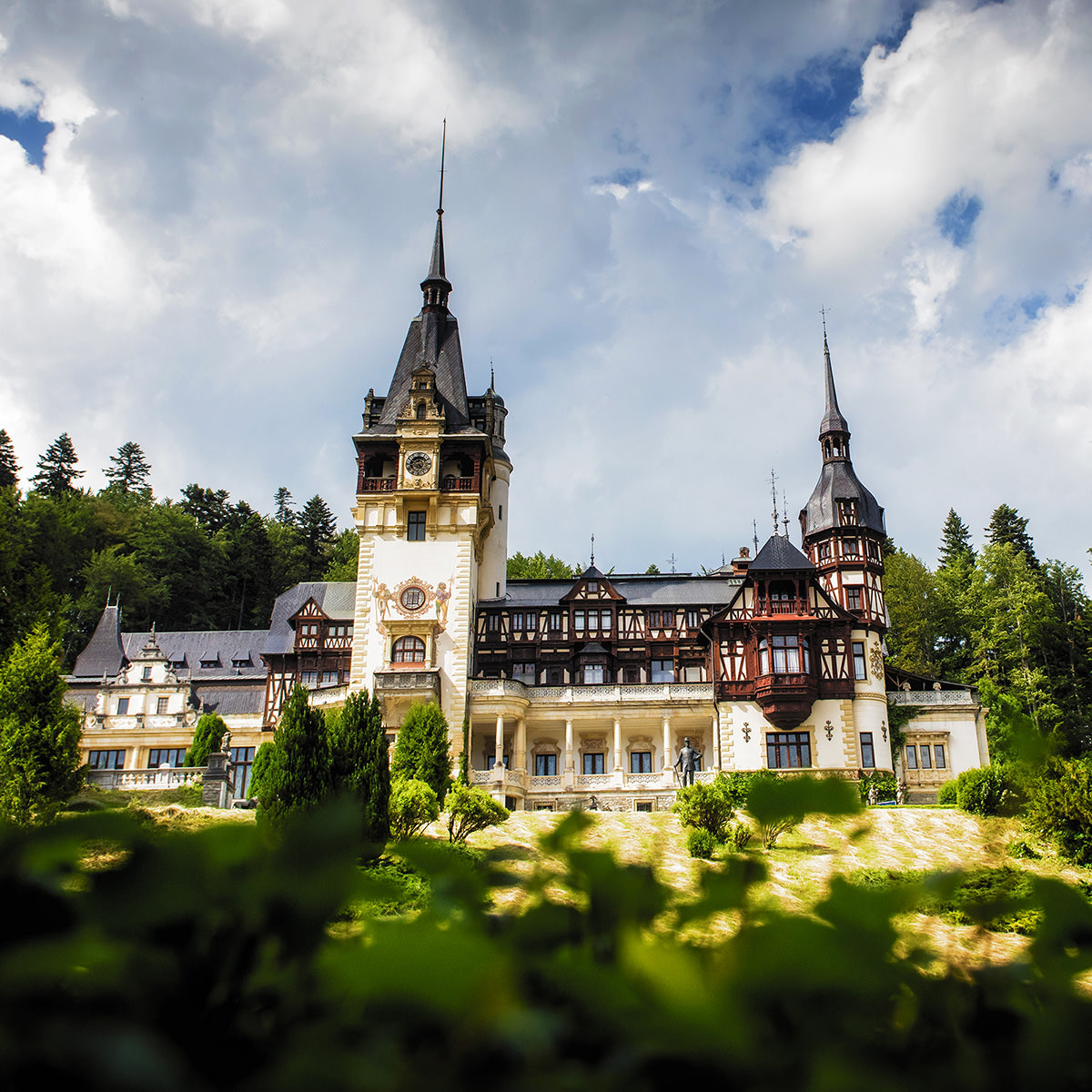
The magnificent symbol of Romanian royalty and one of the most alluring castles of the world, Peleș appears to us like a magical illusion in the middle of the Carpathian woodland. Equally enticing and graceful both on the outside and the inside, the castle itself and the surrounding grounds create a fairytale experience where we can discover the treasures and stories of the royal Romanian legacy!
The castle of Peleș rises at the foot of Bucegi Mountains, in a small meadow surrounded by forests, a place that was chosen by king Carol I of Romania. While it was once just a village on the road between Bucharest and Brașov, the settlement around the castle grounds gradually became the elegant town and mountain resort of Sinaia. For many years, Peleș Castle became the favorite summer residence of the Romanian royal family, with many important historical events and personalities passing through the castle. Today, it houses the Peleș National Museum and it belongs once again to the royal family. Peleș Castle is considered a marvelous mix of neo-Renaissance and neo-Gothic elements, with a touch of romanticism. Designed and built by a multicultural group of craftsmen and workers, including the famous Karel Liman, it has countless unique and impressive characteristics.
CORVINS CASTLE

The first sight of the castle is also the most lasting, with its massive silhouette rising atop a solitary cliff, with the long bridge over a deep ravine and its strong towers breaching the sky. If it was not for the gloomy modern buildings around, we might even get carried away into the past, expecting mounted knights to appear over the bridge!
It is easy to imagine this place several centuries ago, when life in medieval Romania revolved around the next war or battle on the horizon. Corvins Castle of Hunedoara is one of those places that seem to rise from the depth of time, a magnificent link between old legends and historical facts. One of the most impressive medieval castles in Europe, it is a truly magnificent monument that stood the test of time for over five centuries to tell countless stories of great leaders and legendary battles. The castle is located on the outskirts of the city of Hunedoara, in the southwestern part of Transylvania. It was built starting with the 15th century, upon the ruins of an older, 14th century fortress. Each new transformation created the Gothic medieval jewel that awes us today, with its massive crenelated walls, strong towers, halls and cellars.
ALBA CAROLINA FORTRESS
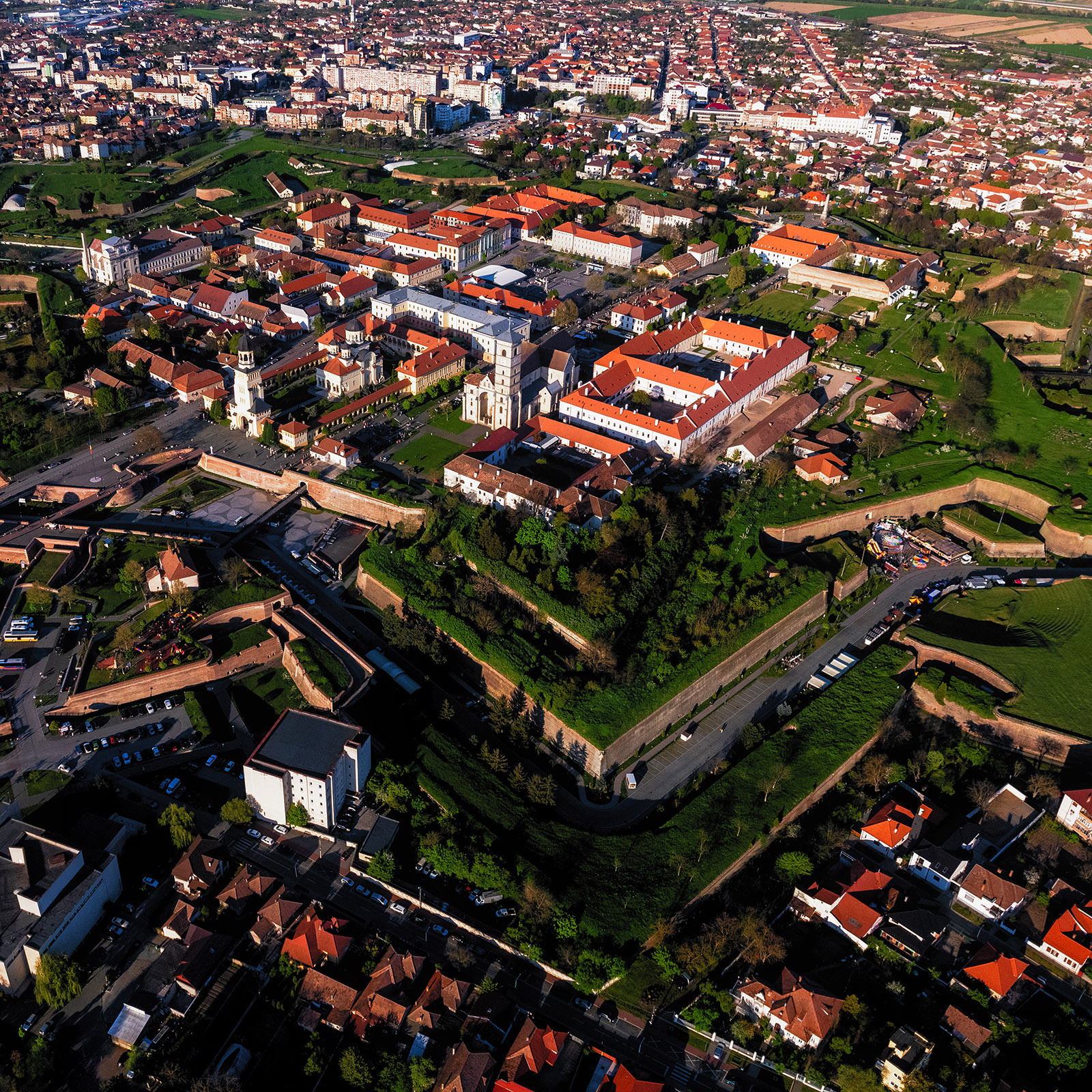
The tale of Alba Iulia is one of three fortresses built on top of the previous, going back at least two millennia and today offering us the chance for an unforgettable cultural experience. The oldest and largest in Romania, it is also one of the most spectacular Vauban fortresses in the world!
One of the longest continually inhabited places in Romania, the story of Alba Iulia goes back several millennia, beginning with a neolithic settlement, followed by a Dacian fortress known as Apoulon and continuing with the Roman fort of Apulum. Former capital of the Principality of Transylvania and developed around the medieval Alba Carolina Citadel, Alba Iulia is also the city of the Great Union of Romania in 1918, today becoming a symbol in the heart of every Romanian and one of the most fascinating destinations in the country. The marvelous Alba Carolina citadel lies in the center of the city of Alba Iulia, developing over many centuries into an impressive complex of imposing fortifications and unique monuments. The impressive citadel was developed through the following centuries with architects and craftsmen from all over Europe. The complex includes three series of fortifications, with a distinct star shape in seven corners that house the strong bastions, each with its own name. Between the bastions and the next series of fortifications made of ravelins and curtain walls, there is an almost 30 meters large trench. The external line is made of the counterguard and various defensive structures.The fortress features a total of seven gates, several of these being veritable works of art.
SIGHIȘOARA CITADEL
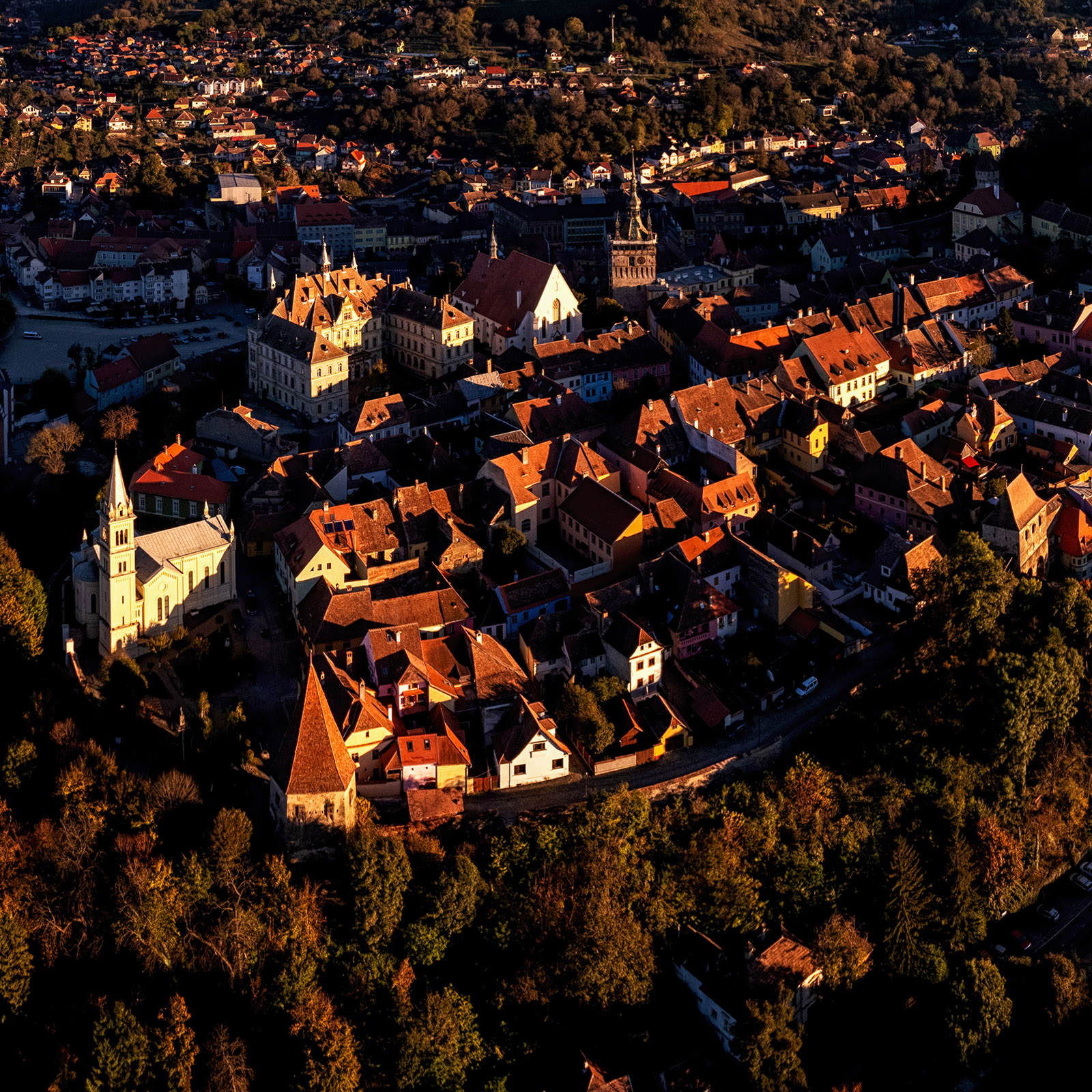
Countless stories and legends are hidden on the cobblestone alleys, through the colorful little houses and among the towers of the old fortress, a magical place that stirs deep emotions, existing beyond time. Modern civilizations seem to stop before the walls of the citadel that withstands as one of the last permanently inhabited medieval fortresses!
The town of Sighișoara is located in the Mureș County, along the valleys of Târnava Mare, between the cities of Brașov, Sibiu and Târgu Mureș. According to UNESCO, Sighișoara is an outstanding testimony to the culture of the Transylvanian Saxons, a culture that is beginning to fade after 850 years and will continue to exist only through its architectural and urban monuments. Today, the citadel of Sighișoara silently endures above the new city, its enchanting streets being invaded by tourists for at least half a year. The story of the Sighișoara citadel seems to start with the arrival of the Saxons from Germany after the invitation of the Hungarian king, in order to defend the kingdom’s eastern border. A settlement was attested on this place since the end of the 12th century and, through the ages, the town was known under several names, Sighișoara appearing for the first time in a document of Vlad Dracul, the father of Vlad Țepeș, who lived here in exile. During the period of maximum development, it used to be one of the most important commercial and crafting centers of all Transylvania, with about 15 known guilds. The Saxons were also behind the construction of the magnificent fortifications that surround the old town, one of its defining elements being the towers that bear the names of the old guilds.
RUPEA FORTRESS
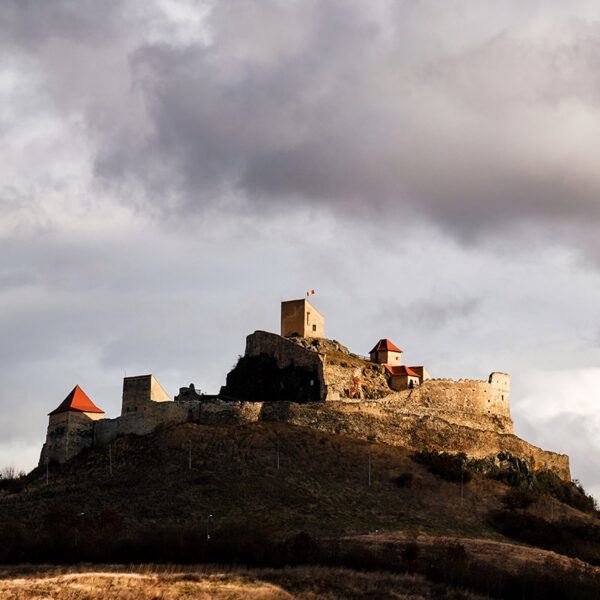
Once completely ruined and abandoned, the majestic fortress of Rupea rises once again above the surrounding hills. We can now see the old fortress returned to its former glory, guarding the road between Brașov and Sighișoara!
Enveloping a tall hill like the shell of a giant snail, the ramparts of Rupea Fortress dominate the surrounding region in southeastern Transylvania, some 50 km north from Brașov, on the way to Sighișoara. We can spot the imposing silhouette of the stronghold from afar, located close to the European road that passes close to the village of Rupea. The sight of the Rupea Fortress driving by and the panoramas from within towards the surrounding hills are truly spectacular. Its four courtyards are defended by tall walls and guard towers, each one allowing access to the higher area. Countless stories that took place behind these walls, generations that lived or found shelter within the old fortress can still be felt within.
mogoșoaia Palace

Bearing the marks of its troubled past, this magnificent architectural jewel once hosted lavish feasts and remarkable guests from Romania and beyond. A favorite weekend getaway for the people of Bucharest, the old palace is alive once again, this time boasting with children’s laughter and the whispers of lovers strolling its alleys!
Located just about 15 kilometers northwest from Bucharest, with easy access from the city, the palace of Mogoșoaia and its extensive domain sits on the shore of a splendid lake. We can thus discover a piece of the past by visiting this architectural jewel dating from the beginning of the 18th century and built by Constantin Brâncoveanu, ruler of Wallachia. Once a flourishing princely residence, the palace now houses a fascinating collection of art and is a wonderful leisure destination for those who visit Bucharest!
Râșnov Fortress

Guardian and refuge during dark times, the fortress built by the ancestors of local peasants has endured the passing of time and still rises proud from its steep rock at the foot of the mountains, with the old walls and towers embracing the little medieval houses and workshops within!
One of the oldest settlements in this part of the country, Râșnov was first mentioned in 1331 and became a town in 1427. The inhabitants of the medieval town began building the fortress on top of the steep hill during the 14th century. It is the best preserved peasant fortress of Transylvania, with an area of about 3.500 square meters. It withstood various attacks and sieges, being occupied just once without a fight by the prince of Transylvania, Gabriel Bathory. It was bought back a year later by the Saxons of the area. A place of refuge for centuries, the fortress has a strategic location, on top of a steep hill, with only one entrance from the east. It has two courtyards, with the exterior one surrounded by a strong stone wall and a few towers. The upper fortress is also surrounded by a wall and towers, surrounding the various structures within, including houses, workshops, a chapel and a school.
FĂGĂRAȘ Fortress
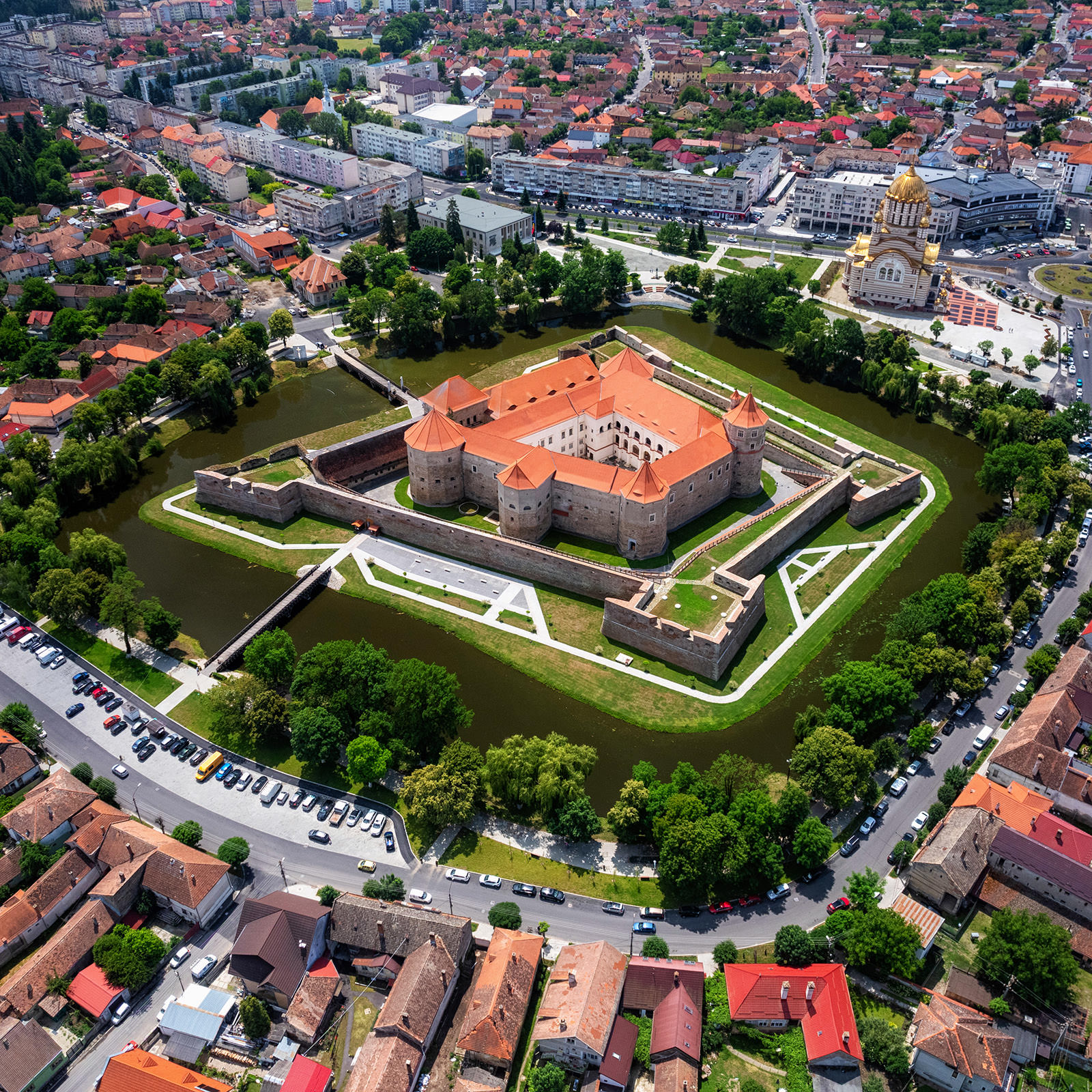
Guardian
One of the oldest and most impressive fortresses in Transylvania, Făgăraș Fortress can be found in the town by the same name, close to the geographical center of Romania. Exceptionally preserved and masterfully restored in the last years, the massive walls of the fortress are mirrored into the surrounding water moat. The fortress of Făgăraș was built starting from 1310 over an older fortification, in order to protect the southern border of Transylvania. During the 17th century, the town was the true capital of the Principality of Transylvania and the fortress was the headquarters of its rulers. Later on, it also served as a military garrison, a military prison, a diocese center and a communist prison, among others. The fortress is surrounded by a large moat filled with water and two bridges allow us to reach the main entrance gate. The imposing brick walls of the fortress protect the inner courtyard and castle, with four bastions on its corners. The inner complex has over 60 rooms and spaces, many of which can be visited within the Land of Făgăraș Museum experience.
Deva Fortress

Seemingly floating above the valley of Mureș from its solitary rock that rises at the core of the modern city, the fortress guarding the gates of Transylvania for seven centuries offers today an exciting journey into the past of the region and spectacular views of the surounding area!
The fortress of Deva is located in the northern part of the city by the same name, capital of the Hunedoara County. It was built by the king of Hungary Bela IV in the 12th century after the great Tatar invasion. Still, there are archaeological finds that attest the existence of an even older fortification on this spot. Perched on top of a volcanic rock that rises almost 400 meters above the valley of Mureș river, it was first mentioned in 1269 and became the residence of the Transylvanian prices and the Hunedoara counts. Deva was one of the most powerful fortresses in Transylvania up until the 19th century, when it began to lose its military role. The walls and inner spaces have been thoroughly renovated in the last decades and we can once again admire the three courtyards of the fortress, with the structures of the palace, bastions, towers, ramparts and storage spaces still visible.
Feldioara Fortress
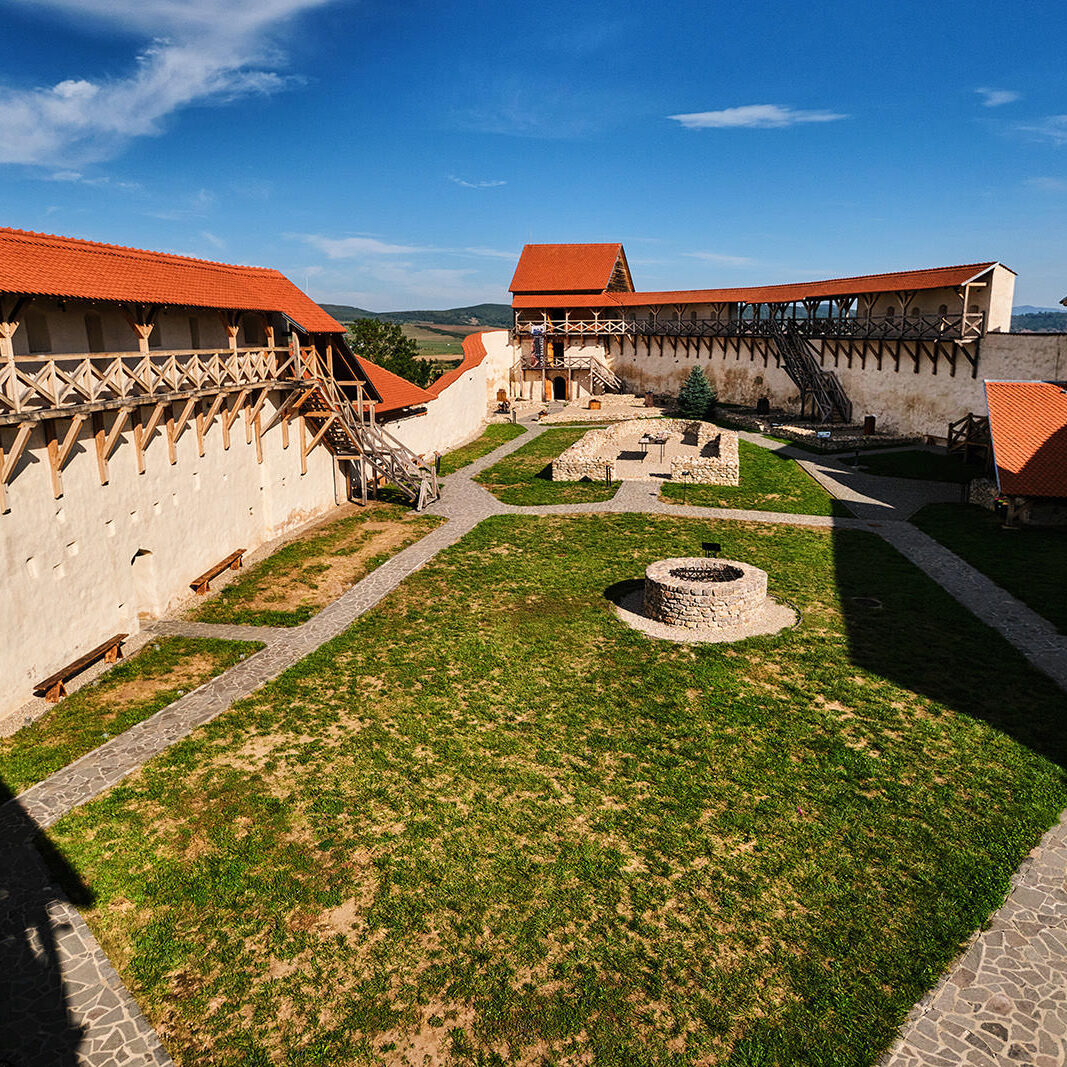
Seemingly
Cetatea Feldioara, ridicată pe dealul din estul satului, a fost construită mai întâi din pământ, fiind ulterior fortificată de Cavalerii Teutoni, însă nu s-au mai păstrat multe elemente din acele vremuri. Se cunosc doar câteva clădiri ce existau în acea vreme, respectiv Sala Cavalerului și Capela Romanică, ultima fiind probabil inclusă în biserica cisterciană de mai târziu. În secolele ce au urmat, comunitatea de sași a refăcut de mai multe ori cetatea țărănească, cu ziduri puternice și turnuri de apărare.
Cetatea Feldioara pe care o vizităm în prezent este rezultatul unui lung și complex proces de restaurare realizat între 2013 și 2017, înainte de acesta existând doar ruinele unor ziduri vechi. Astfel, monumentul a fost readus la viață, urmărindu-se refacerea complexului fortificat așa cum arăta în secolul 17. Aici putem admira zidurile de incintă și câteva turnuri de apărare dezvoltate pe mai multe etaje, precum și fundațiile diferitelor structuri ce existau în interior, inclusiv o fântână cu o adâncime estimată la 70 metri. Urcând pe zidul de strajă, putem admira panorama încântătoare a Țării Bârsei, în vreme ce în interiorul turnurilor descoperim mici expoziții istorice și etnografice.
Poienari Fortress
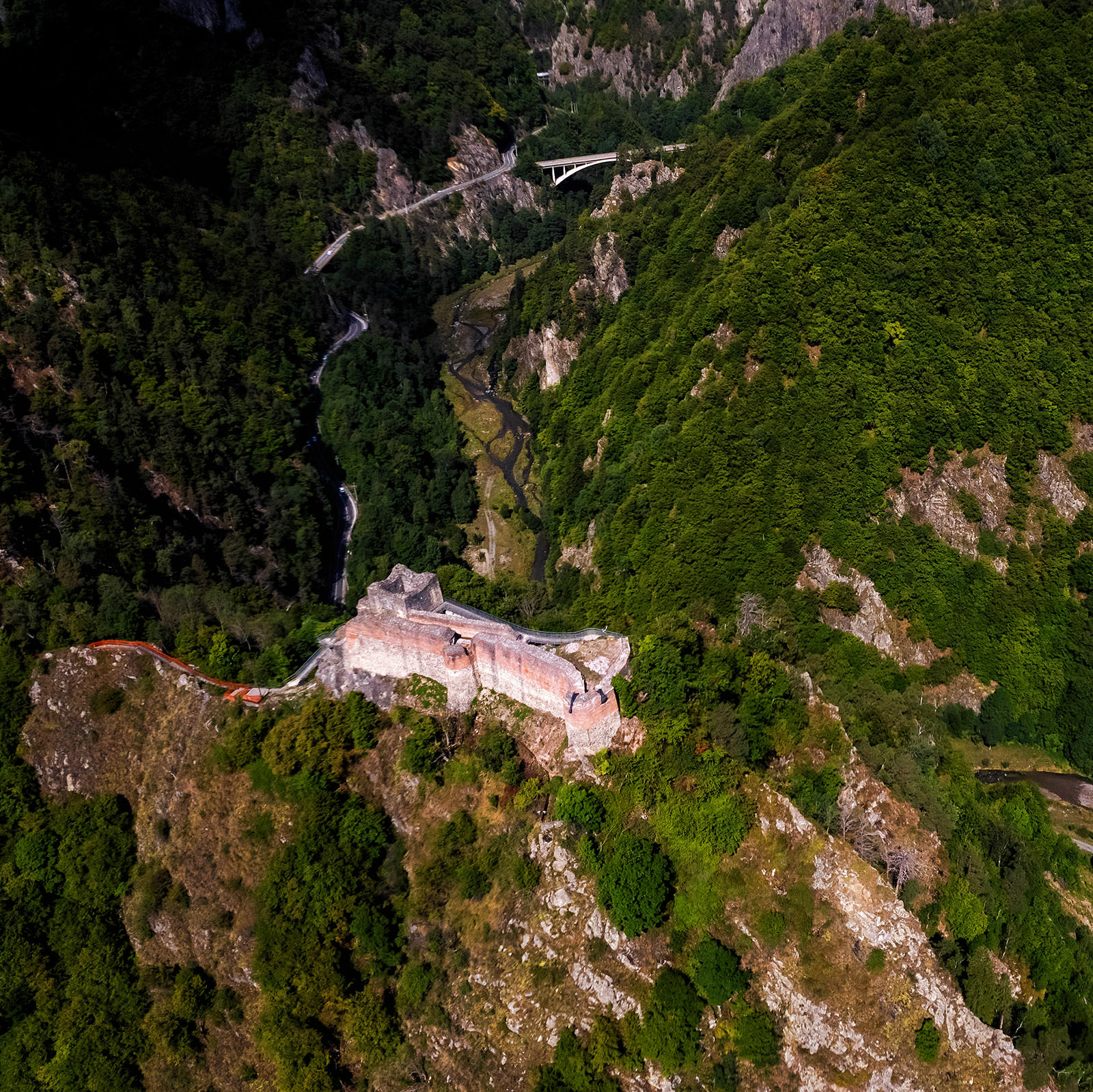
Seemingly
Deasupra uneia dintre acestea, se ridică ruinele vechii Cetăți Poienari, a doua reședință a domnitorului Vlad Țepeș. Din drumul de jos și până la cetate urcăm cam 400 metri de-a lungul unui traseu cu aproape 1.500 de trepte. Înconjurată de legende, cetatea includea un donjon central, înconjurat de ziduri și turnuri puternice, ce păzeau poziții strategice de-a lungul crestei abrupte. Priveliștea cu care suntem răsplătiți de sus merită efortul, dezvăluind culmile sălbatice din jur.
Șoimoș Fortress
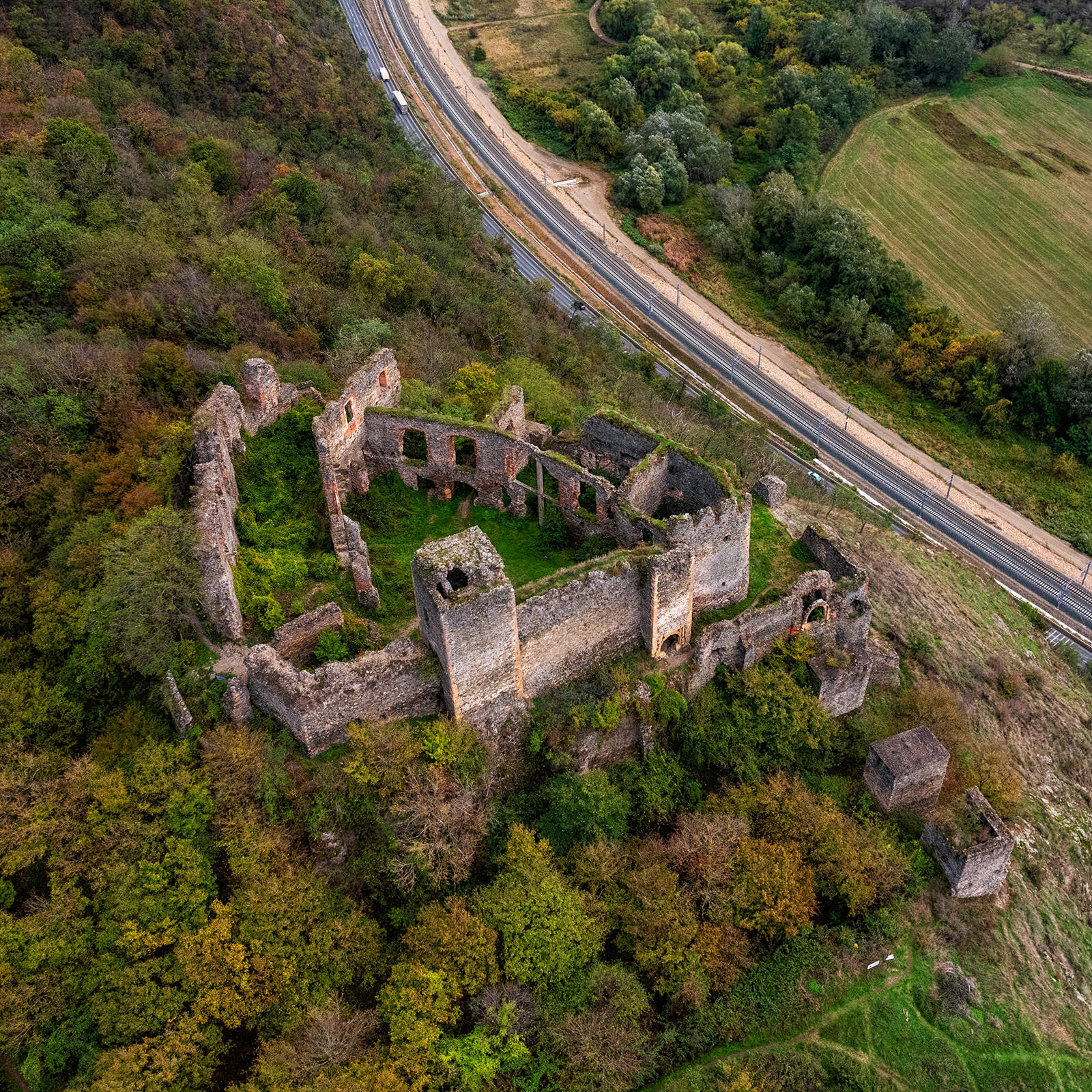
Seemingly
Deasupra uneia